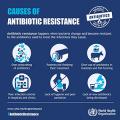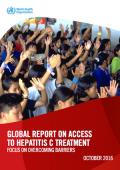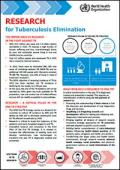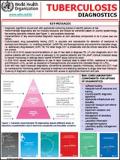What's New
Displaying results 2471 - 2480 of 4914

Resource | Publications,
This is the second progress report of Pacific Women Shaping Pacific Development (Pacific Women). It provides a summary of the program’s achievements and challenges from July 2015 to June 2016. Pacific Women is a 10-year $320 million initiative that aims to support women – regardless of their income, location, disability, age or ethnic group – in the 14 Pacific Island Forum countries to participate fully, freely and safely in political, economic and social life. Pacific Women supports countries to meet the commitments made in the 2012 Pacific Islands Forum Leaders’ Gender Equality Declaration.

Resource | Tools,
This manual is a resource for Facilitators who have attended a Facilitator Training Workshop on the delivery of the Sinovuyo Caring Families Programme for Parents and Teens. In it you will find the contents of this 14-week parenting programme.
This is a simple manual to use and provides a guide for you on how to deliver the programme each week.
The main purpose of the Sinovuyo Caring Families Programme for Parents and Teens is to help cultivate open, caring and trusting relationships between caregivers and their teenagers. Healthy and positive relations help parents to protect their adolescents against a variety of negative health and social outcomes.

Resource | Publications,
The global response to the HIV pandemic has been unprecedented. Billions of dollars and millions of people were quickly mobilized to save lives and fight the pandemic. The gains have been tremendous. If country governments, donors, and civil society work in partnership, and continue to ensure every investment has a clear outcome, it is within our grasp to control the epidemic. Yet, this potential success is at risk if we do not take decisive actions to ensure the HIV response is sustainable. A series of concrete actions are available that will have rapid impact and accelerate our progress towards long-term sustainability.
In 2015, PEPFAR took dramatic new steps to hardwire sustainability into its business processes, developing strategic approaches to move the sustainability agenda forward, and measure progress. This paper sets forth PEPFAR’s tactics to sustainably build national HIV responses and practices that monitor progress toward sustainable epidemic control and achievement of the global 90-90-90 goal.

Resource | Publications,
This report presents a summary of existing policy and legal environment related to HIV services in Pakistan which safeguard the universal human rights of the key affected populations with regard to the HIV prevention, care and treatment. The report reflects mainly on the process, important discussions and recommendations which premised the need for the formulation of a national level action plan aimed at creation of an enabling environment. The report along with the action plan annexed provides the stakeholders a broader framework of understanding on some prioritized actions necessary to ensure the inclusion and participation of key populations in Pakistan to augment and sustain the enabling environment essentially needed for an improved national HIV response.

Resource | Infographics,
The WHO World Antibiotic Awareness Week held from 14 to 20 November 2016. The campaign aims to increase awareness of global antibiotic resistance and to encourage best practices among the general public, health workers, policy-makers and the agriculture sector to avoid the further emergence and spread of antibiotic resistance.

Resource | Presentations,
By Donn Colby, Mathurada Kongkabpan, Somsong Teeratakulpisarn, et al
At International AIDS Conference 2016
Durban, South Africa

Resource | Presentations,
By Supabhorn Pengnonyang
Program Coordinator
Thai Red Cross AIDS Research Centre

Resource | Publications,
This is the first-ever global report on treatment access to hepatitis C medicines. The report provides the information that countries and health authorities need to identify the appropriate HCV treatment, and procure it at affordable prices. The report uses the experience of several pioneering countries to demonstrate how barriers to treatment access can be overcome. It also provides information on the production of new hepatitis C drugs and generic versions worldwide, including where the drugs are registered, where the drugs are patented and where not, and what opportunities countries have under the license agreements that were signed by some companies as well as current pricing of all recommended DAAs, including by generic companies all over the world.

Resource | Fact Sheets,
The World Health Organization (WHO) has developed a Global Action Framework for TB Research, to foster high-quality national and global TB research over the next 10 years to 2025. The framework sets the principles for action on TB research and recommends the roles, responsibilities and deliverables for major stakeholders, both global and national. It is designed for use by a wide range of groups and individuals including ministries of health and their national TB programmes, ministries of science and technology, national research institutes, academia, researchers, international and national donors and technical agencies, NGOs and civil society.

Resource | Fact Sheets,
• Diagnostic algorithms should start with appropriate screening policies to identify persons at risk.
• Recommended diagnostics are not mutually exclusive and should be combined based on country epidemiology, the existing laboratory network (see Figure 1), and available resources.
• Implementation of any recommended diagnostic requires all core laboratory components to be in place
• Culture-based, drug susceptibility testing (DST) is accurate and reproducible for detection of resistance to
isoniazid and rifampicin, i.e. multidrug-resistant (MDR-TB) and fluoroquinolones and second-line injectable drugs, i.e. extensively drug-resistant (XDR) TB. For other drugs DST is problematic and the clinical relevance of results are unclear.





